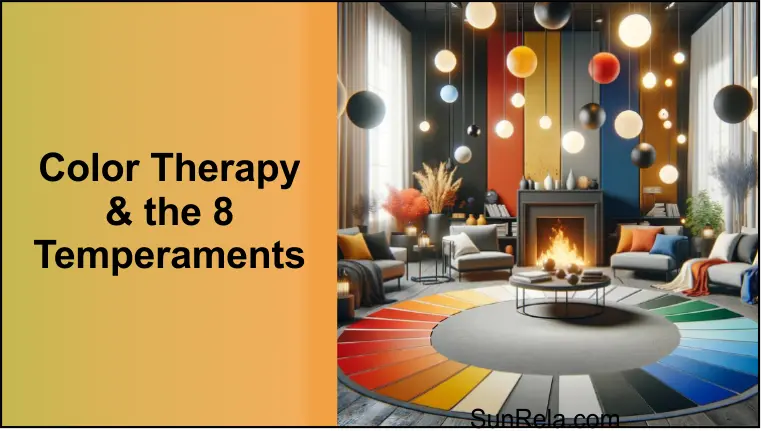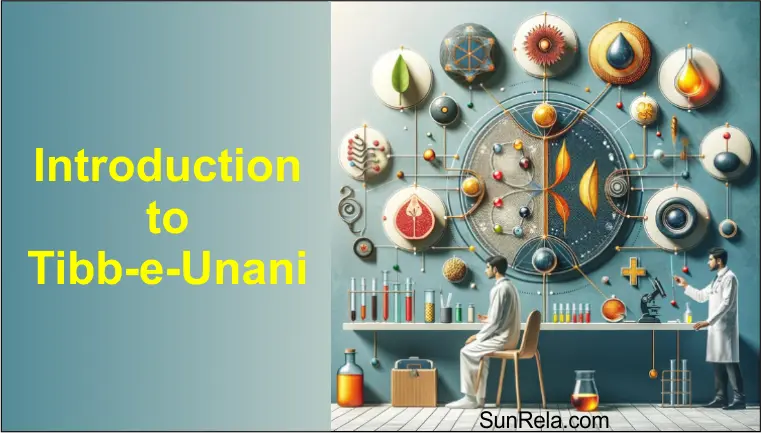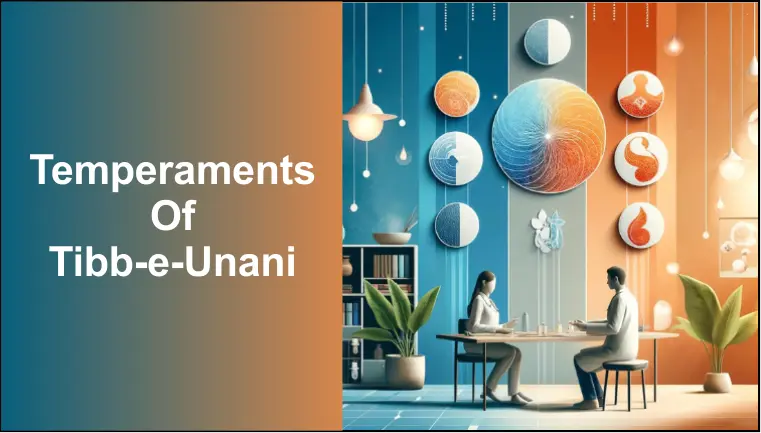Color Therapy and Tibb-e-Unani
Color therapy, also known as chromo therapy, is a practice that uses colors to influence human emotions and psychological states. The theory behind color therapy is that different colors have specific effects on our mood and well-being. In Tibb-e-Unani, known as Greek medicine, temperaments are connected to cold, heat, dryness, and humidity. These four qualities are intertwined in nature, forming eight different temperaments. Each of these temperaments is represented by a unique color, which reflects its influence on health.
Understanding and adjusting these colors can help balance human temperaments and improve well-being. This article will delve into color therapy and explore how it relates to the eight temperaments of Tibb-e-Unani. These temperaments are based on the principles of ancient Greek medicine, which classified people’s health and personalities according to four humors and their combinations.
Color therapy and Tibb-e-Unani are closely related.
Color therapy, also known as chromo therapy, is a practice that uses colors to influence human emotions and psychological states. The theory behind color therapy is that different colors have specific effects on our mood and well-being. In Tibb-e-Unani, known as Greek medicine, temperaments are connected to cold, heat, dryness, and humidity. These four qualities are intertwined in nature, forming eight different temperaments. Each of these temperaments is represented by a unique color, which reflects its influence on health. Understanding and adjusting these colors can help balance human temperaments and improve well-being.
This article will delve into color therapy and explore how it relates to the eight temperaments of Tibb-e-Unani. These temperaments are based on the principles of ancient Greek medicine, which classified people’s health and personalities according to four humors and their combinations.
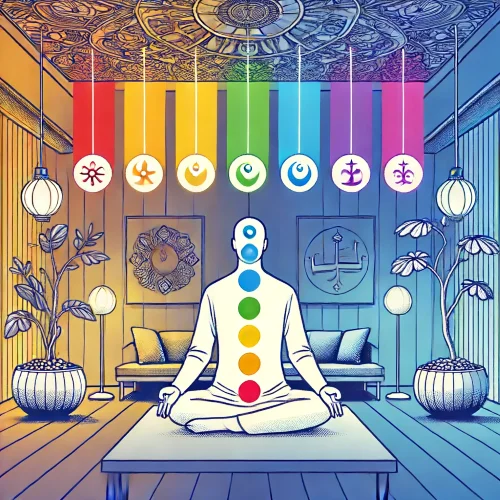
Color Therapy
The 8 Temperaments of Tibb-e-Unani And Colors (Color Therapy)
Tibb-e-Unani/Greek medicine, or humoral theory, categorizes health and personality into four main temperaments based on balancing bodily fluids: blood, phlegm, yellow bile, and black bile. These temperaments can be divided into eight subtypes, each with specific qualities and corresponding colors that affect emotions.
1. Cold Dry (Melancholic)
Qualities: Cold and dry
Corresponding Color: Black or Dark Blue
Emotional Effects: Black and dark blue are associated with introspection, seriousness, and depth. These colors can evoke mystery, power, and sometimes sadness or melancholy. They are often used to promote contemplation and a deeper understanding of oneself.
Physical Harms:
- Dry Skin: People with a cold-dry temperament often experience dry, flaky skin. This can lead to itching, irritation, and eczema.
- Joint Pain: Cold-dry individuals are prone to stiffness and pain, especially in cold weather. Conditions like arthritis can be expected.
- Respiratory Issues: This temperament’s dry and cold qualities may lead to respiratory problems such as bronchitis and dry cough.
- Digestive Problems: Indigestion, constipation, and slow metabolism are common issues for people with a cold-dry temperament.
Psychological Harms:
- Depression: The cold-dry temperament is associated with a melancholy disposition, which can lead to feelings of sadness, depression, and low energy.
- Anxiety: These individuals may experience heightened anxiety and worry.
- Isolation: A tendency towards introversion and social withdrawal is often seen.
2. Dry Cold (Melancholic Variant)
Qualities: Dry and cold
Corresponding Color: Gray
Emotional Effects: Gray is linked with neutrality, balance, and sophistication. It can evoke feelings of calmness and detachment, making it a color that promotes a sense of stability and moderation.
Physical Harms:
- Dryness: Like cold-dry, this temperament leads to dry skin, dry eyes, and dehydration.
- Cold Extremities: Hands and feet often feel cold and may suffer from poor circulation.
- Chronic Fatigue: Persistent tiredness and lack of vitality are common.
Psychological Harms:
- Mood Swings: Frequent mood changes and irritability can occur.
- Cognitive Decline: Difficulty in concentration and memory issues are common.
- Lack of Motivation: A general sense of apathy and lack of drive.
3. Dry Hot (Choleric)
Qualities: Dry and hot
Corresponding Color: Red
Emotional Effects: Red is a stimulating color that symbolizes energy, passion, and urgency. It can increase heart rate and boost energy levels, making it an excellent choice for activities that require motivation and excitement.
Physical Harms:
- Skin Conditions: Rashes, acne, and other inflammatory skin conditions are expected.
- Fever: Prone to frequent fevers and heat-related illnesses.
- Digestive Issues: Problems such as acid reflux, ulcers, and constipation due to dryness.
Psychological Harms:
- Anger: Individuals with this temperament are prone to irritability and anger.
- Impatience: They often exhibit impatience and impulsiveness.
- Stress: High levels of stress and tension.
4. Hot Dry (Choleric Variant)
Qualities: Hot and dry
Corresponding Color: Orange
Emotional Effects: Orange combines red energy with yellow’s happiness. It stimulates creativity, enthusiasm, and social interaction. It can lift spirits and promote a sense of warmth and comfort.
Physical Harms:
- Dehydration: High risk of dehydration and related issues like kidney stones.
- Heat Stroke: Susceptible to heat exhaustion and stroke.
- Heart Problems: Increased risk of hypertension and other cardiovascular issues.
Psychological Harms:
- Aggression: Increased aggression and frustration.
- Restlessness: Difficulty in relaxing and staying calm.
- Sleep Disorders: Insomnia and disturbed sleep patterns.
5. Hot Humid (Sanguine)
Qualities: Hot and humid
Corresponding Color: Yellow
Emotional Effects: Yellow is a cheerful color that promotes happiness, optimism, and mental clarity. It stimulates intellectual activity and can enhance concentration and memory.
Physical Harms:
- Sweating: Excessive sweating and body odor.
- Infections: There is a higher risk of infections due to the warm and moist environment of the body.
- Allergies: Prone to allergic reactions and skin irritations.
Psychological Harms:
- Hyperactivity: Tendency towards hyperactivity and restlessness.
- Over-exuberance: Excessive enthusiasm that can lead to burnout.
- Mood Swings: Fluctuating emotions and mood swings.
6. Humid Hot (Sanguine Variant)
Qualities: Humid and hot
Corresponding Color: Green
Emotional Effects: Green is associated with nature, growth, and renewal. It has a calming effect and promotes balance and harmony. Green can reduce stress and create a sense of peace and tranquility.
Physical Harms:
- Fluid Retention: Tendency to retain fluids, leading to swelling and bloating.
- Respiratory Issues: Issues like asthma and other respiratory conditions due to humidity.
- Digestive Problems: Indigestion and a tendency to develop ulcers.
Psychological Harms:
- Anxiety: Increased anxiety and nervousness.
- Impulsivity: Difficulty in controlling impulses and emotions.
- Overthinking: Prone to excessive worrying and overthinking.
7. Humid Cold (Phlegmatic)
Qualities: Humid and cold
Corresponding Color: Blue
Emotional Effects: Blue is a calming color that promotes relaxation, peace, and serenity. It can help reduce anxiety and stress and is often used in spaces designed for rest and rejuvenation.
Physical Harms:
- Respiratory Problems: Conditions like asthma, bronchitis, and colds.
- Water Retention: Tendency to retain water, leading to swelling and puffiness.
- Slow Digestion: Issues with slow digestion and bloating.
Psychological Harms:
- Lethargy: Persistent feelings of lethargy and fatigue.
- Low Motivation: Lack of motivation and drive.
- Melancholy: Prone to feelings of sadness and melancholy.
8. Cold Humid (Phlegmatic Variant)
Qualities: Cold and humid
Corresponding Color: White
Emotional Effects: White is associated with purity, clarity, and simplicity. It creates a sense of space and openness, promoting peace and tranquility. It is often used to clear the mind and promote mental clarity.
Physical Harms:
- Susceptibility to Colds: Prone to catching colds and flu.
- Joint Pain: Pain and stiffness in joints, particularly in damp weather.
- Respiratory Issues: Increased likelihood of respiratory infections.
Psychological Harms:
- Depression: Tendency towards depression and low mood.
- Social Withdrawal: Preference for solitude and social withdrawal.
- Anxiety: Increased anxiety and nervousness.
How to Use Color Therapy Based on Your Temperament
Understanding your temperament and its corresponding color can help you harness the power of color therapy to improve your emotional and psychological well-being. Here are some practical tips:
Decorating Your Home (Color Therapy)
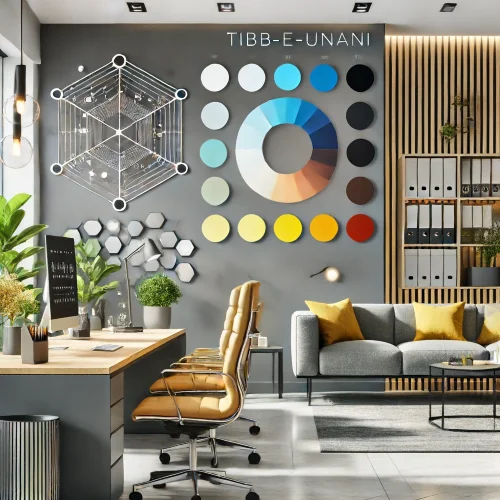
Cold Dry (Black/Dark Blue): Use these colors in areas meant for relaxation and introspection, like a study or meditation room.
Dry Cold (Gray): Incorporate gray in living spaces to create a calm and balanced environment.
Dry Hot (Red): Add red accents in areas where energy and activity are desired, like a gym or kitchen.
Hot Dry (Orange): Use orange in creative spaces like an art studio or home office to boost enthusiasm and creativity.
Hot Humid (Yellow): Brighten common areas like the living room or dining room with yellow to promote happiness and social interaction.
Humid Hot (Green): Decorate with green in bedrooms or bathrooms to create a calming and refreshing atmosphere.
Humid Cold (Blue): Use blue in spaces where you want to relax and unwind, such as the bedroom or a reading nook.
Cold Humid (White): Apply white in any room to enhance a sense of cleanliness and mental clarity.
Choosing Your Clothes
Cold Dry: Wear black or dark blue to create a severe and reflective look.
Dry Cold: Choose gray for a balanced and sophisticated appearance.
Dry Hot: Opt for red to boost confidence and energy.
Hot Dry: Wear orange to inspire creativity and warmth.
Hot Humid: Pick yellow to lift your spirits and promote optimism.
Humid Hot: Select green for a calming and balanced effect.
Humid Cold: Choose blue to promote peace and relaxation.
Cold Humid: Wear white for a fresh, clean, and clear-minded look.
Color Therapy in Your Workspace
Cold Dry (Black/Dark Blue): Use these colors in your workspace to enhance focus and introspection.
Dry Cold (Gray): Incorporate gray to create a balanced, neutral work environment.
Dry Hot (Red): Add red accents to stimulate energy and motivation.
Hot Dry (Orange): Use orange to boost creativity and enthusiasm in your work.
Hot Humid (Yellow): Include yellow to improve focus and positivity.
Humid Hot (Green): Decorate with green to create a calming and harmonious workspace.
Humid Cold (Blue): Use blue to reduce stress and promote a serene work environment.
Cold Humid (White): Keep your workspace clean and clear with white to enhance mental clarity.
Conclusion: Embrace Color Therapy for Better Health and Well-Being
Color therapy, combined with understanding the eight temperaments of Tibb-e-Unani /Greek medicine, offers a unique approach to improving mental and emotional health. By recognizing the qualities of your temperament and incorporating the corresponding colors into your daily life, you can create a more balanced and harmonious existence.
Our articles will help you understand these concepts and provide practical tips for using color therapy to enhance your life. Embrace the healing power of colors and discover a path to better health and wellness. Stay hopeful, stay optimistic, and let colors guide you to a healthier and more balanced life.


